![]()
![]()
© 2006 The Independent Fact Group
Non official videos from the wreck of MV Estonia can give new
answers
ANALYSIS REPORT
| Subject: | Non official videos from the wreck of MV Estonia can give new answers |
| Type: | Analysis |
| By: | The Independent Fact Group |
| Status: | Proved |
| Date: | 2006-04-15 |
| Version: | Report - English |
The Fact Group's aims and objectives:
The Independent Fact Group was formed in early 1999 to clear up the many question marks about the M/V Estonia disaster, in a structured and methodical manner. There has been considerable speculation concerning the efforts of the Joint Accident Investigation Commission (JAIC) and the political, legal and media treatment of the accident and its tragic consequences.
The aim is to give those in authority an opportunity, based on the facts of the case, to decide to review this matter, with a view to further action. Our efforts also enable the media and the general public to decide on the basis of the objective information which is available concerning the accident, and the conclusions to be drawn from a technical and civic perspective.
The overall objective is the setting up of a new investigation of the accident which can describe the course of the accident in detail, and its causes, with subsequent assessment of the moral and legal responsibilities, where this is feasible.
We are motivated by the belief that a properly conducted investigation will contribute to maritime safety and by our concern for Sweden's reputation as a nation which upholds safety at sea and the rule of law.
Methodology:
In the course of this task, we have assumed that the solution of a problem is never better than the validity of the basic assumptions. As a result, we have stipulated some methodological principles, of which the following are the most fundamental:
1. All scenarios must be considered to be true until the contrary is
proved.
2. All observations, assumptions or statements on which a scenario
is based must be considered false until the contrary is proved.
We have defined a number of criteria for concluding that an observation, assumption or statement may be considered to be true or false, and processes and routines for the route to be taken in clarifying an observation, assumption or statement. These criteria involve technical, empirical, statistical and/or semantic requirements which, if they are relevant must all be met if the observation, assumption or statement is to be classified as an objective fact.
The materials we have worked with are primarily the documents, audio recordings and films in the Swedish Accident Investigation Commission's Estonia archive, together with supplementary information from other public sources and, in addition documentation from the Meyer shipyard and its independent commission.
Summary of this report
In this report the Independent Fact
Group shows that there were an substantial amount of non official filming made
from the wreck during 1996, this in spite of the Agreement and law that states
that the MV Estonia and the (defined) surrounding area shall be regarded as a
final place of rest for victims of the disaster, and such shall be afforded
appropriate respect. Several videos were (and are) still not official and more
than 20 hours of film are still in Finnish custody. If analysed those
recordings may give new information and answers regarding the circumstances
and events of the disaster of the ship.
Definitions of certain language marks used in this report:
Our comments, explanations or clarifications are presented within square brackets [ ].
Background
In June 1996 activities took place to recover oil from M/V Estonia to prevent pollution of the marine environment from the wreck. This activities was in accordance with the Agreement and law, and according to information from the Swedish Board of Accident Investigation, SHK, the JAIC made an inquiry for having complementary filming of the wreck done at the same time in June 96. The video material from this filming, that officially took place the 19:th of June 1996, was filed 11.07.1996 in the SHK archive as "Video from FIN latest divings at Estonia 19.06.96 in connection with the recovery of oil, Estonia B 154".
This film, "B 154", was until 2000 the only official film made of the M/V Estonia between 05.12.1994 and 19.06.1996.
In 1999 the Independent Fact Group found that at least 4 other videos were made during 1996. Copies of the video material from those videos, made by ROV cameras (Remote Operated Vehicle) were asked for 15.09.1999 from SHK by the Independent Fact Group. The director of SHK, Ann-Louise Eksborg, denied any knowledge of this video material saying that the only video material from 1996 was the film "B 154" as mentioned above.
The Independent Fact Group was recommended to ask the Finnish authorities of copies from any other filming as it must have been done without the knowledge of the Swedish authorities.
The finish Board of Accident Investigation, director Kari Lehtola, had earlier declared that he in the future would not answer any questions from others than authorities, why the Independent Fact Group had to get SHK to ask the Finnish authorities for copies of the video material made on other dates than the official date. An official request was sent from SHK, Ann-Louise Eksborg 13.10.1999 (SHK A04/99).
After several month and reminders Kari Lehtola sent parts of the requested video material in February 2000, after returning an answer (shown below) on our latest reminder. The request was that the video material should include the complete recordings from the 5 separate films in 1996 that we had discovered.
When analyzing the video Kari Lehtola sent the 23:rd of February 2000 in comparison with the earlier video "B 154" it became clear that the the "B 154" had been "cut down" showing only 1 hour and 14 minutes of what "originally" was at least 1 hour and 26 minutes. The material now received from Finland showed that earlier material had been censored. Se correspondence regarding this.
The other 4 occasions filmed earlier 1996 was now found edited to the "B 154" on the same tape after the material from 19.06.1994. However the material from the other occasions 1996 prove to be short cuts of video recordings made on different days beginning 26.04.1996 by ROV investigation. It is also proven that there is more material "missing" from those recordings.
The Independent Fact Group made several requests to get the complete material from those other days sent to Sweden. The requests were refused by Kari Lehtola who then finally in his answer recommended the Fact Group to go to Finland for viewing the videos at the Finnish Environment Central. Se correspondence, Kari's answer point 2.
Kari Lehtola explains the video recordings made 1996. (translation from Swedish)
"Thank you for your e-mail of 17.02.200 at 09.56.
I sent you by post last week a copy of the so called oil-recover video made the summer 1996. The video was made after JAIC asked the Finish Environment Central to take more pictures from the Estonia. At the time the Environment Central were recovering oil from the wreck. For the planning of the filming the Finish Cost Guard with ROV were on site and the video recording ordered by JAIC were made by them. The video recordings were made:
19.06.1996 at 18.25.59 - 19.52.44
Further more these short clips from the Finish Environment Central have been copied to the same video:
26.04.1996 at 23.23.46 - 23.24.32
09.06.1996 at 13.18.24 -
13.24.06
11.06.1996 at 12.19.22 - 12.22.41 [correct is at: 12.14.22 -
12.22.41]
17.06.1996 at 18.11.29 - 18.19.23
All four clips show openings in the hull made by Rockwater.
The copy we sent you are from a cassette marked MASTER. We have sent the MASTER-tapes we had to the Central Criminal Police in Finland as it has been statements in foreign news papers that the videotapes should have been manipulated.
Regards
Kari Lehtola
Copy to: Ann-Louise Eksborg, head of SHK [Swedish Accident Investigation Board]"
End of translation
The Fact Group commentary
From the letter (above) it is clear that JAIC asked "Finish Environment Central" to "take more pictures" from the wreck of Estonia. This was done from a ship of the Finish Cost Guard that were on place for planning the work. The JAIC put an order that was carried out by the Coast Guard, and the video material cover: 19.06.1996 at 18.25.59 - 19.52.44 hours.
Lehtola then writes that additional short cuts from video material at the "Finish Environment Central" was copied to the same tape. (dates 26/4, 9/6, 11/6 and 17/6).
Lehtola by that confirms that the material on the tape does not cover the complete material from the video recordings 1996 (as we asked for).
Lehtola also writes that the video material was copied from a cassette where the "box" for the cassette was marked MASTER. We presume that the earlier received videocassette B 154 also was copied from that so called MASTER, however this later version of B 154 started at 18.40 PM which is 14 minutes later than on the video sent from Lehtola. It is therefore clear that video material received from SHK have been censored.
Further analysis of the videos:
From the recording made 26.04.1996 at 23.23.46 - 23.24.32 hours a second ROV unit can be seen and identified. There is however no official video material recorded from this other ROV. It is not likely to believe that two ROV's were sent down 26.04.1996, two month before the recovery of oil, with the only result of 47 seconds recorded material! (in that case it must have been one of the most expensive underwater filmings ever made)
Neither is it likely to believe that the recordings from the following dates only should have resulted in the following "short cuts":
09.06.1996 at 13.18.24 - 13.24.06 hours = 5 minutes 42 seconds!
11.06.1996 at 12.14.22 - 12.22.41 hours = 8 minutes 19 seconds!
17.06.1996 at 18.11.29 - 18.19.23 hours = 7 minutes 54 seconds!
It is also found that the recordings copied is not in chronological order, why this so called "MASTER" is not a real MASTER.
A MASTER is not cut, edited or altered in any way. From a master an "ORIGINAL" can be made, and an ORIGINAL can be edited, cut or what ever.
Further more, after the short cut from 11.06.1996, that is the last part of the video, there is a short (under 1 second) video clip presumably from 11.06.1996 at 13.00.34 showing the ROV's grip arm probably recovering something from the wreck. It is most likely that the date is the 11:th, but the second figure is unclear, it can be any date between the 10:th and 19:th.
Pictures from the different diving or ROV operations
The following picturs are just some examples from this different operations during 1996.
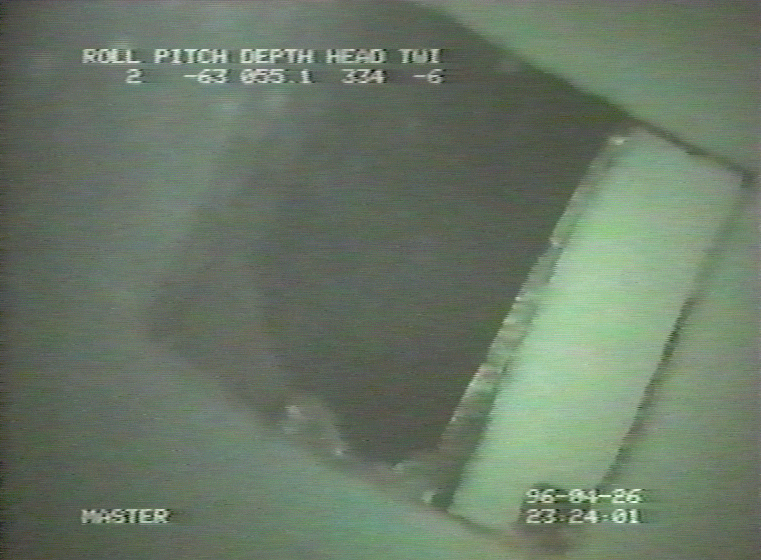
Picture 1. Hole in the hull made earlier by Rockwater divers for getting access to the different decks.
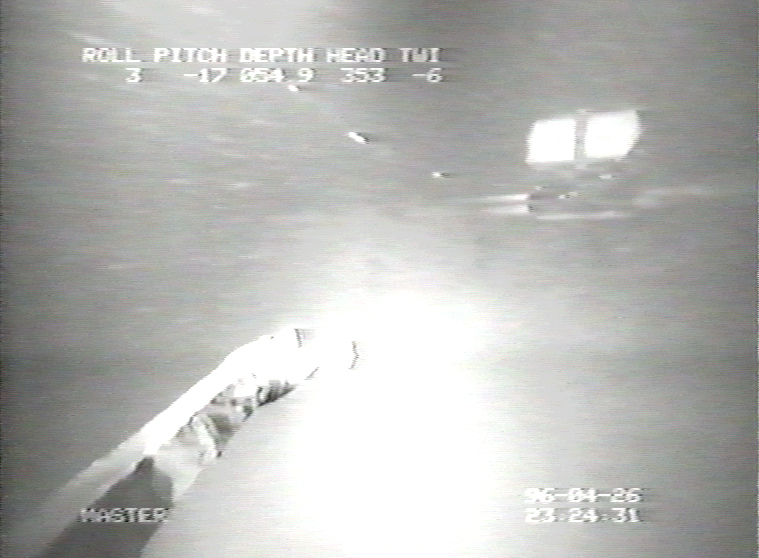
Picture 2. A second ROV is seen filming the wreck (upper right corner). The object to the left in the picture (under the text "MASTER") is an arm on the ROV that took this picture.
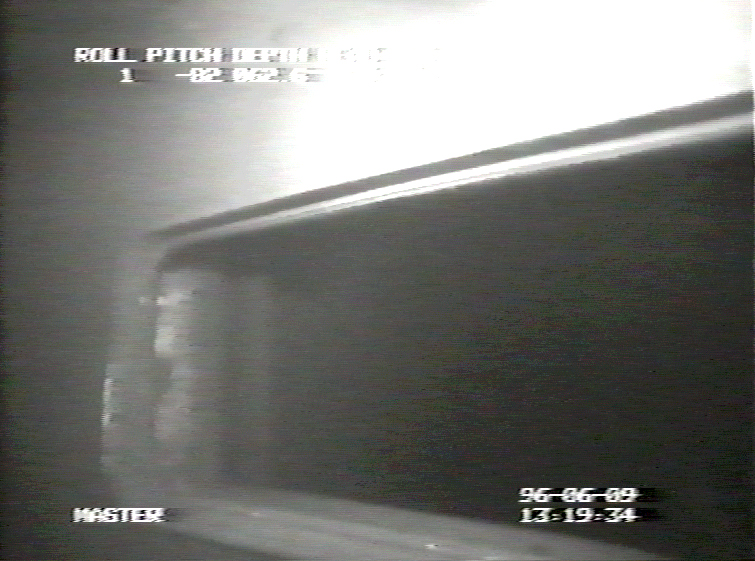
Picture 3. A broken window.
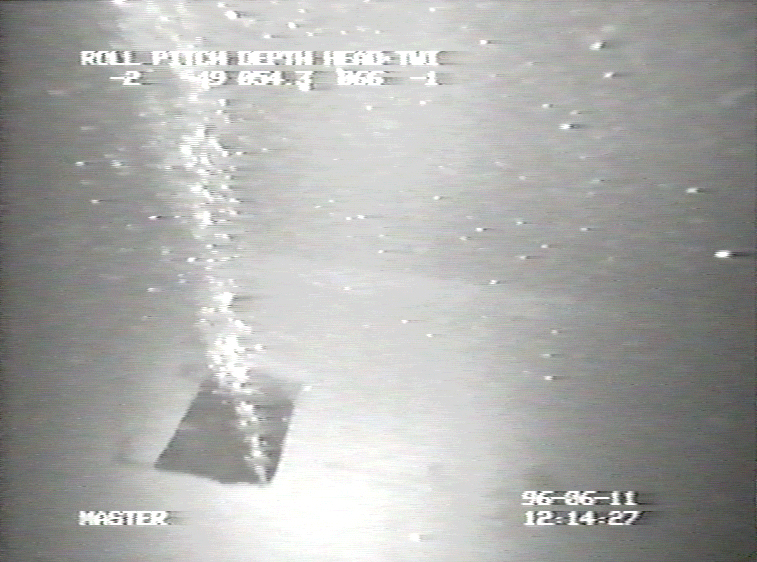
Picture 4. Air is coming out from a second earlier made hole in the hull. Why is air coming out, are there divers inside the wreck?
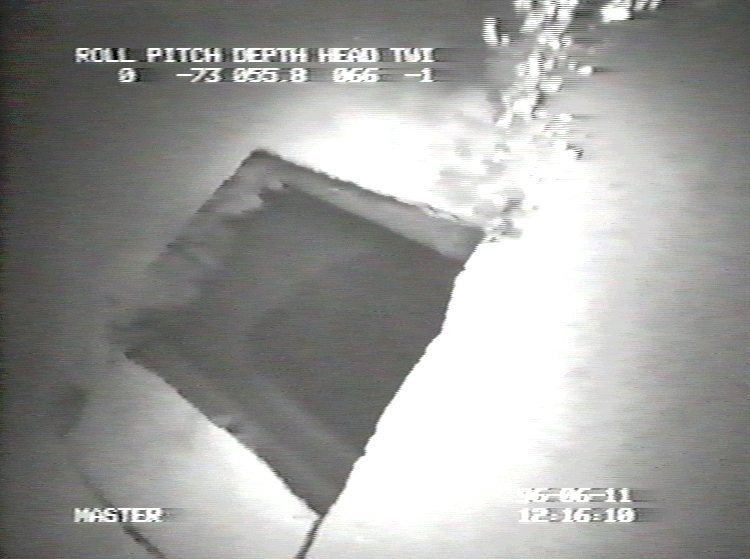
Picture 5. Air is coming out from the hull.

Picture 6. A third hole in the hull.
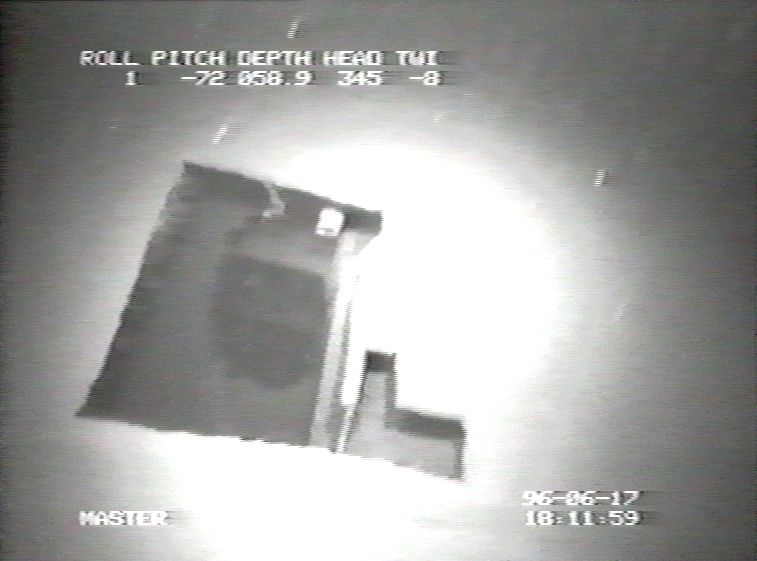
Picture 7. The third hole.
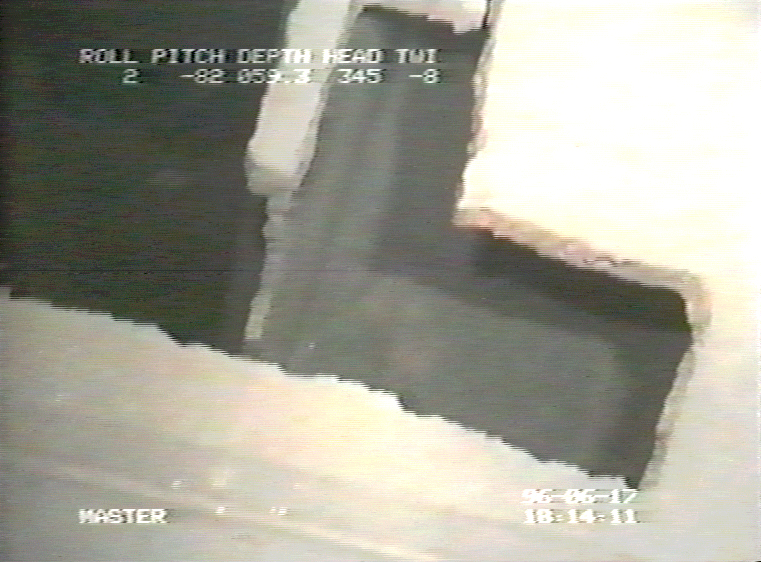
Picture 8. Close up of the third hole. Note the clean edge from the cutting made by underwater (welding) cutting equipment.
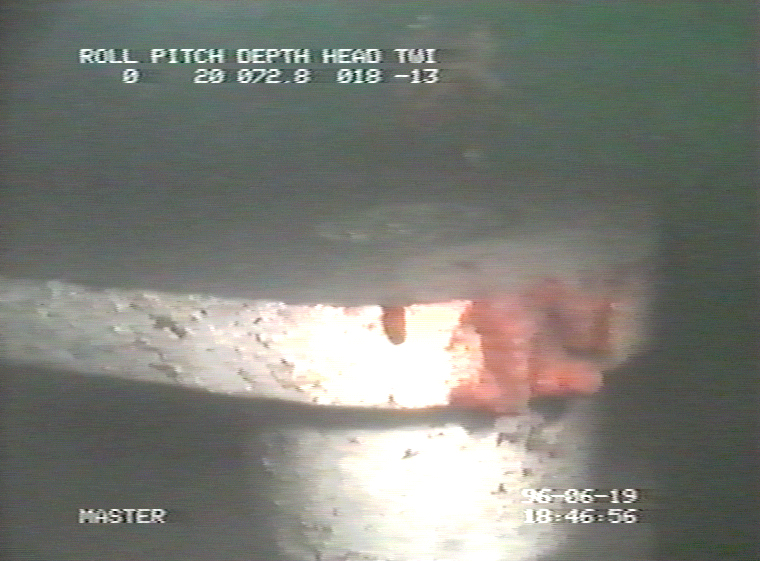
Picture 9. Close up of the port side upper hinge for the visor. The damage on the curved edge was carefully documented.
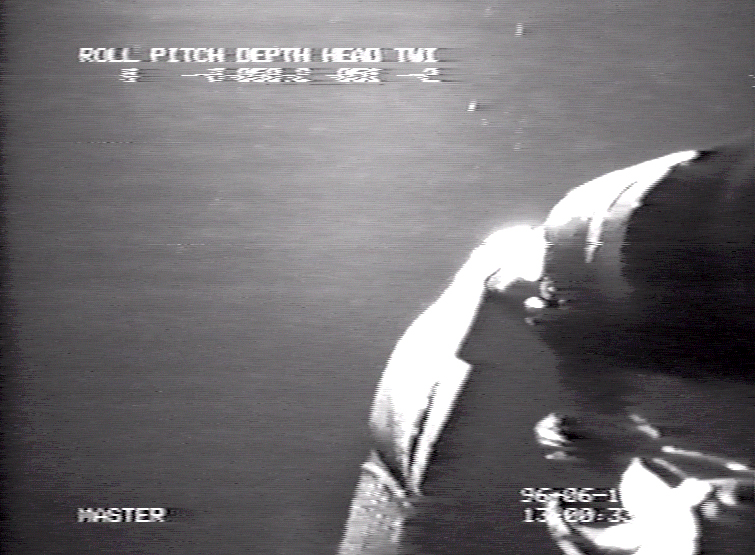
Picture 10. Recovery operation with ROV (?) some day between 96-06-10 and 96-06-19. Only a few frames were copied to the tape received from Finland on the tape B 154. The ROV tool (arm) to the right in the picture is holding on to some basket or fabric.
The Fact Group questions
When was the order to perform those video investigations of the MV Estonia in 1996 made, and who gave the order?
How many hours of film were made, and what parts of the ship were filmed?
Were there also recovery operations done of other things than the oil?
How can, according to Kari Lehtola, a master consist of "clips" and further more in non chronological order?
The Fact Group commentary regarding professional video recording
In reality professional video recording is done with the following type of recorders, normally even though it take place on a ship during ROV investigations.
At the time, 1994 - 1996, recordings could be done with the following four different type of systems:
A. BETA SP with 700 lines/inch resolution,
B. BETA (standard), with 650
lines/inch resolution,
C. SVHS (SuperVHS), with 400 lines/inch resolution,
D. VHS, with 250 lines/inch resolution.
A and B were used by professionals, C in extreme situations like parachuting and similar. D was and are still for consumer use (home video system).
A MASTER is recorded on BETA SP, or if it is a low budget production, on BETA. A recorder is used and the recording always start with about two minutes of BAR-CODE. The purpose with the BAR-CODE is that later copying and playback shall have a "trigger signal" and to give time to the tape to stabilize. The BETA MASTER also have a visible "TIMECODE" in hours, minutes, seconds and frames so that editing can be done exactly. When copying or editing the TIMECODE can be taken away.
When doing productions where there are limited time like when using video at diving operations, there is no time to stop the master, play back and check the result. Instead they use one or several "slave recorders" running parallel to the master. Those machines are normally professional VHS recorders (also noted in official video logs from JAIC). If the production team are true professionals they can make "online" edited versions resulting in VHS originals for viewing purposes. Important to note, those" originals" are no true originals for being used for copying and they have nothing else to do with the MASTERS than that they are made at the same occasion.
That, like the commission seem to believe, originals should have been made from VHS "MASTERS " to BETA originals is as stupid as to believe professional Hollywood movies are made with consumer video cameras and later copied to professional tapes.
To exclude any possibility of such stupidity it can easily be seen that the pictures from the BETA-tapes in the commission archives are with higher quality than on those VHS originals they state are the true originals.
The Fact Group commentary and report conclusion:
It is without any doubt a fact that original MASTERS from all the video investigations of MV Estonia are missing, and that recordings ordered to be done by JAIC have been rejected from being sent to the Independent Fact Group by Kari Lehtola.
It is also a fact that there has been extensive video documentation of the wreck of MV Estonia that never has been official and that we still do not know the content of.
Every film taken for documentary reasons of the wreck of MV Estonia can give new information and answers regarding the circumstances and events of the disaster of the ship.
DEDICATION
We dedicate this report to all those who lost their lives at sea as a result of a ships lack of seaworthiness.
If MV Estonia had been seaworthy many of the more than 850 persons who lost their lives would have had a chance to survive.
Troon, Scotland 15 April 2006